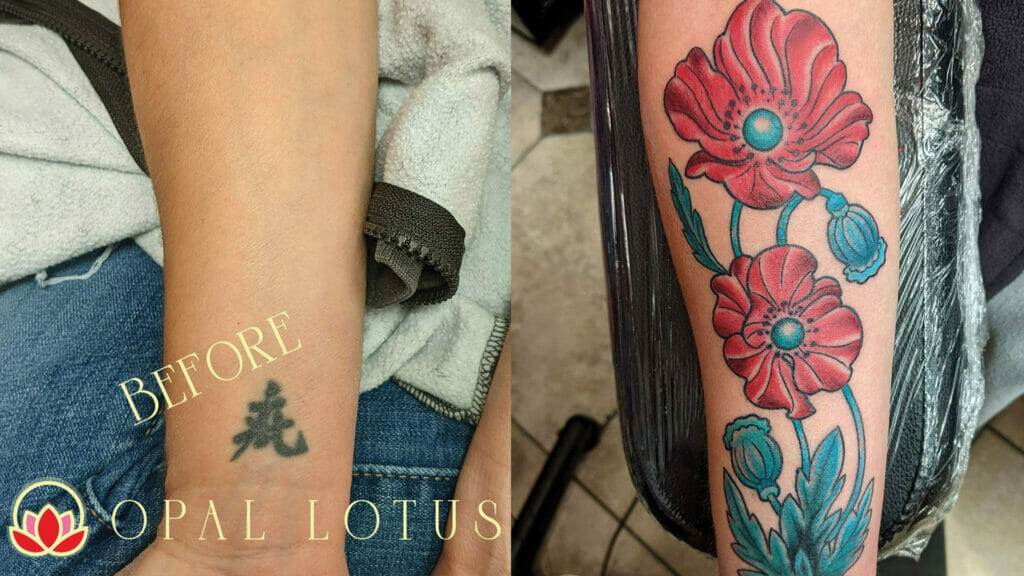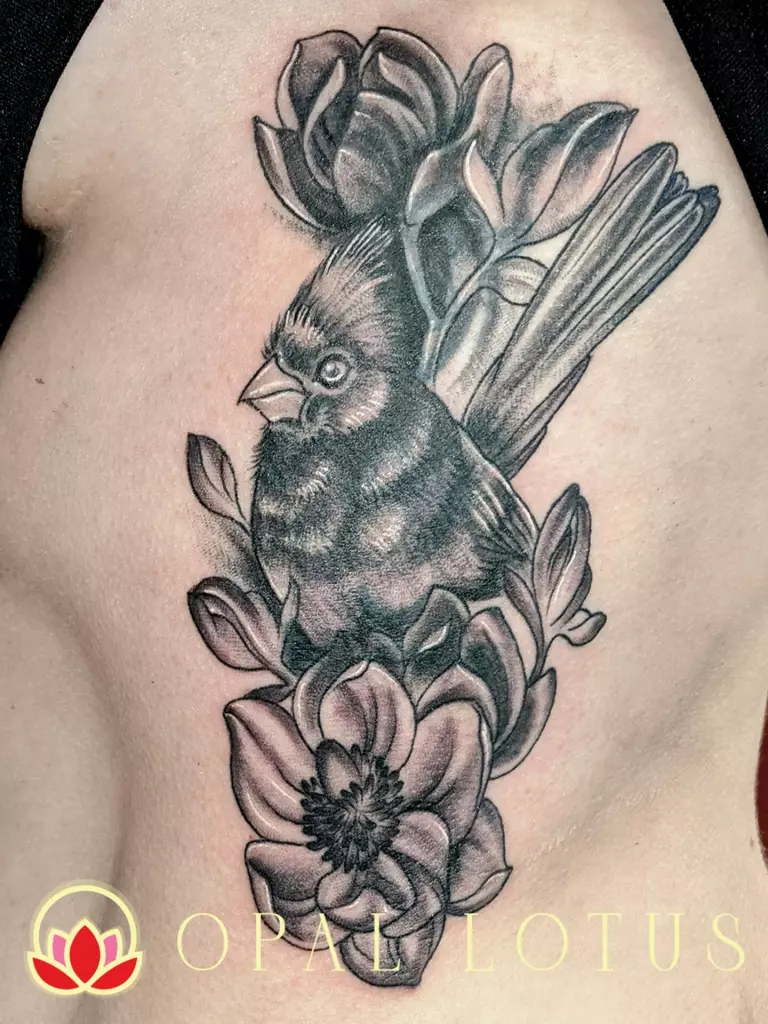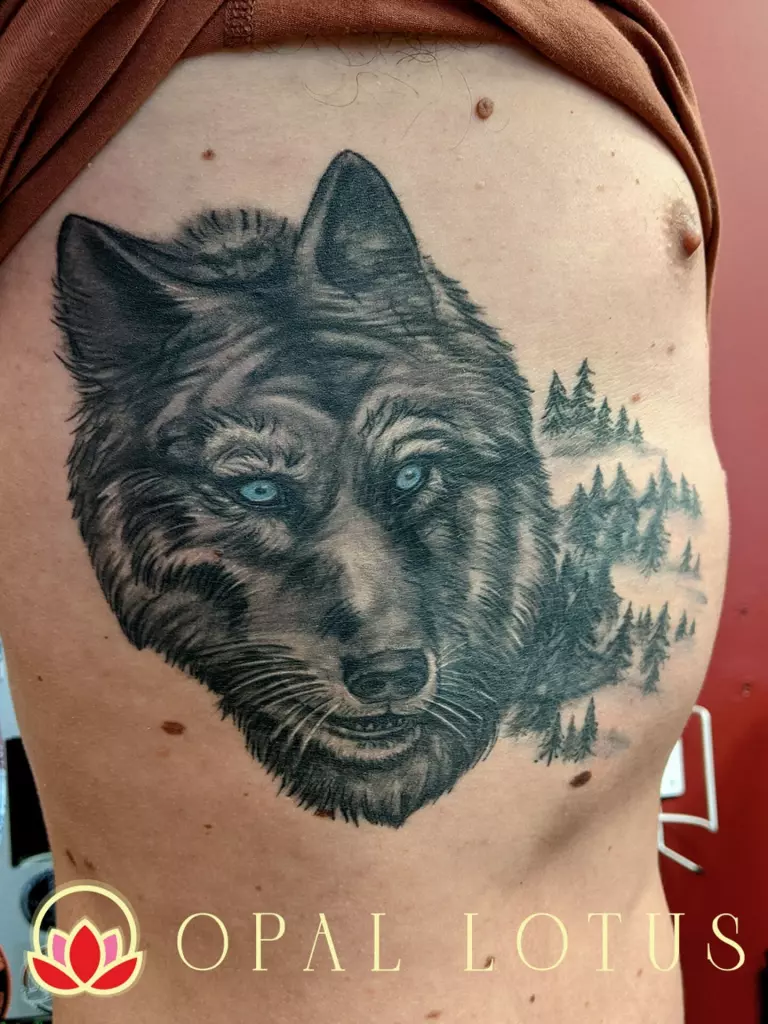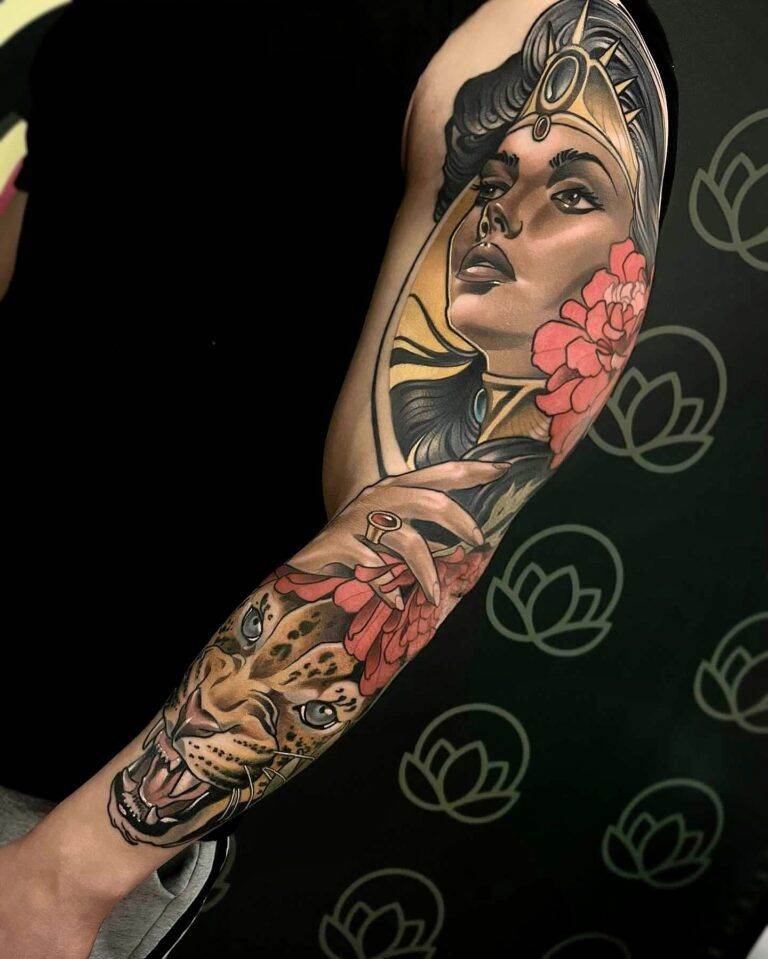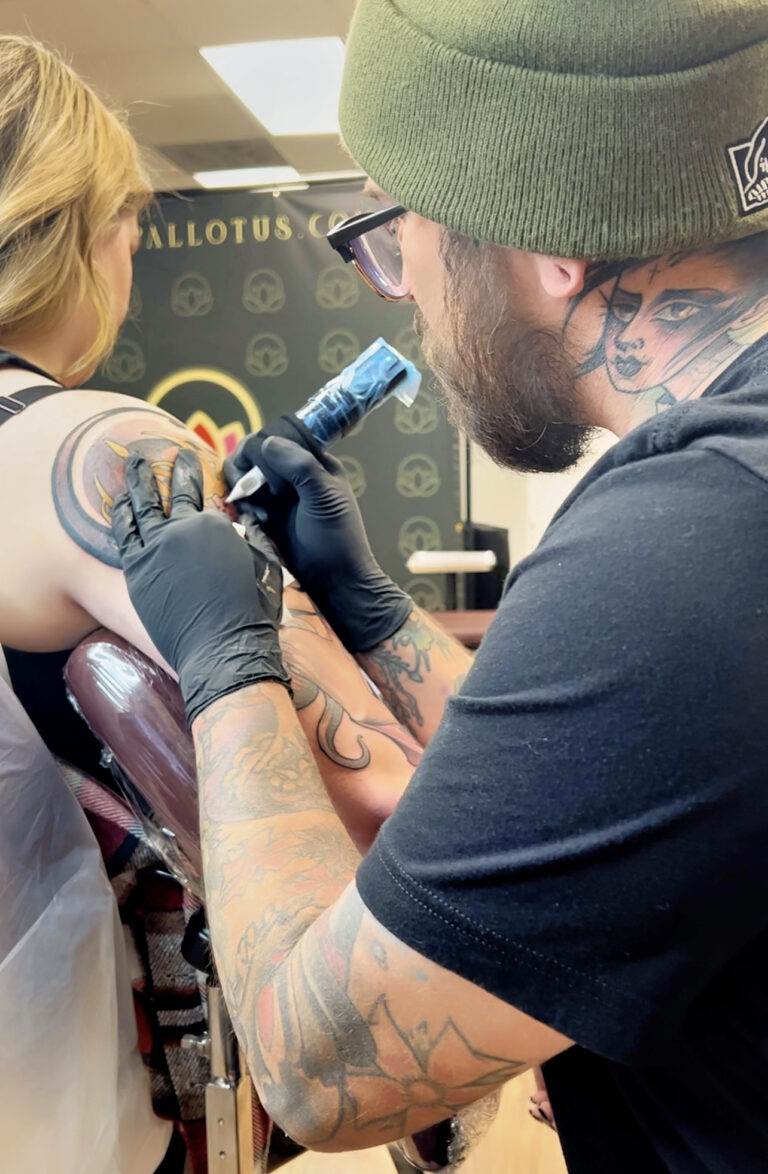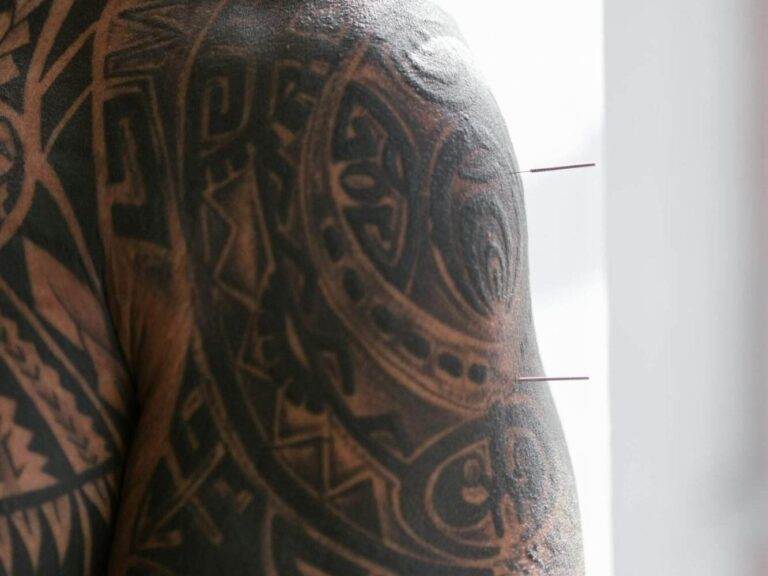Cover-up tattoos have become increasingly popular in recent years, as more and more people seek to hide or transform their existing tattoos. Whether it’s a regrettable design, a faded or outdated tattoo, or simply a desire for change, cover-up tattoos offer a solution for those looking to conceal or update their ink. In this blog post, we will explore the world of cover-up tattoos in Montrose, discussing their history, different types, the importance of choosing the right tattoo artist, the process of covering up an old tattoo, the challenges involved, and the benefits and psychology behind getting a cover-up tattoo. By the end of this article, readers will have a comprehensive understanding of cover-up tattoos and why they have become such a popular choice.
The Rise of Cover-Up Tattoos in Montrose: A Brief History
Tattoos have a long history in Montrose, with the art form dating back centuries. However, it is only in recent years that cover-up tattoos have gained popularity. In the past, people would often resort to laser tattoo removal or simply live with their unwanted ink. However, advancements in tattooing techniques and the growing skill of tattoo artists have made cover-up tattoos a viable option for those looking to transform their existing tattoos.
There are several reasons why people choose to get cover-up tattoos. One common reason is regret. Many people get tattoos on impulse or during a certain phase of their life, only to later realize that they no longer resonate with the design or meaning. Covering up these regrettable tattoos allows individuals to move on from their past and start fresh with a new design that better represents who they are now.
Another reason for getting a cover-up tattoo is to update an old design. Over time, tattoos can fade or become distorted due to sun exposure, aging skin, or changes in body shape. By getting a cover-up tattoo, individuals can breathe new life into their old ink, giving it a fresh and vibrant look.
The Different Types of Cover-Up Tattoos and Their Purposes
There are different types of cover-up tattoos, each serving a specific purpose. One type is the partial cover-up, where the new design is strategically placed to incorporate elements of the old tattoo. This is often done when the existing tattoo is small or has faded significantly. By incorporating the old design into the new one, the tattoo artist can create a cohesive and visually appealing piece.
Another type of cover-up tattoo is the complete cover-up, where the new design completely conceals the old tattoo. This is typically done when the existing tattoo is large, dark, or has intricate details that cannot be easily incorporated into a new design. Complete cover-ups require more skill and expertise from the tattoo artist, as they need to carefully plan and execute the new design to ensure complete coverage.
The purpose of cover-up tattoos varies depending on the individual. For some, it is about hiding a regrettable tattoo and moving on from their past. For others, it is about updating an old design and giving it a fresh look. Ultimately, cover-up tattoos offer individuals the opportunity to transform their existing ink and create something new and meaningful.
The Process of Covering Up an Old Tattoo: What to Expect
The process of getting a cover-up tattoo typically involves several steps, starting with a consultation. During the consultation, you will discuss your ideas, goals, and expectations with the tattoo artist. They will assess your existing tattoo and determine if it is suitable for a cover-up. They may also take into consideration factors such as the size, color, and location of the old tattoo.
Once the design is finalized, the tattoo artist will begin the process of covering up the old tattoo. This may involve using different techniques such as shading, color blending, or adding additional elements to the design. The artist will carefully plan and execute the new design to ensure complete coverage and a visually appealing result.
After the tattoo is completed, proper aftercare is crucial to ensure proper healing and longevity of the new ink. The tattoo artist will provide you with detailed instructions on how to care for your new tattoo, including cleaning, moisturizing, and avoiding certain activities or products that may hinder the healing process.
It is important to note that covering up an old tattoo can be a complex process and may require multiple sessions depending on the size and complexity of the design. Patience and open communication with your tattoo artist are key during this process.
The Challenges of Cover-Up Tattoos: What You Need to Know
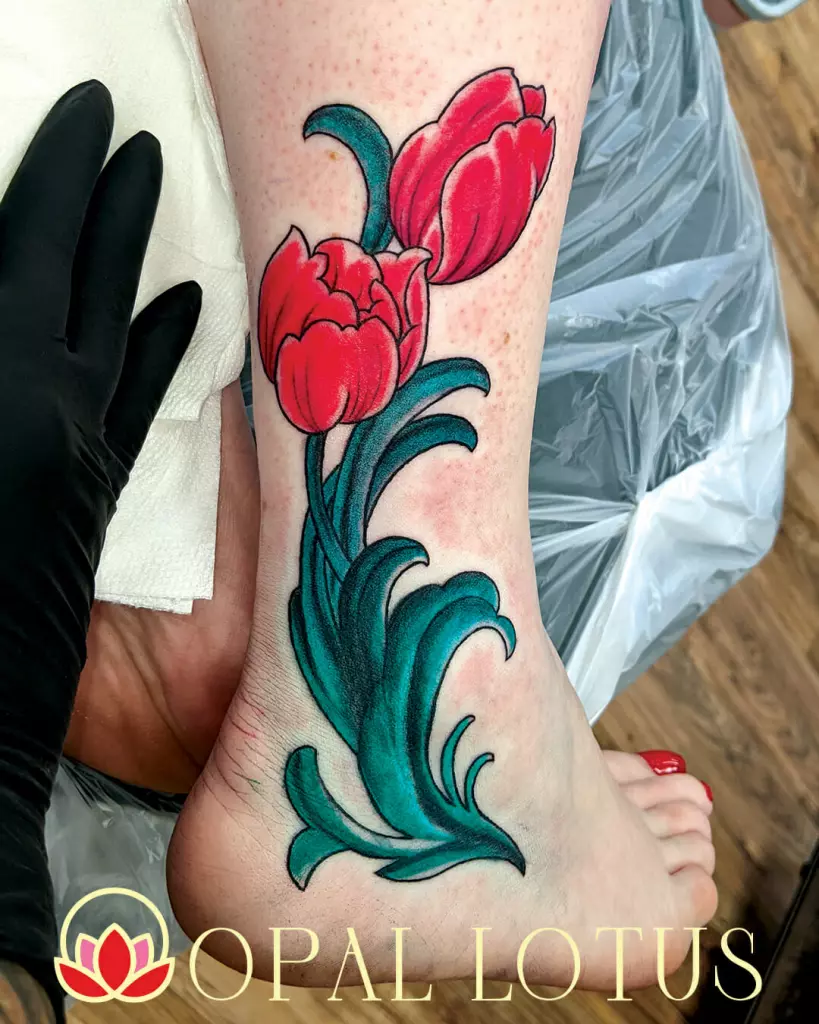
Cover-up tattoos come with their own set of challenges that both the client and the tattoo artist need to be aware of. One of the main challenges is color matching. Depending on the colors and saturation of the existing tattoo, it can be difficult to find a new design that effectively conceals the old ink. Tattoo artists need to have a deep understanding of color theory and how different pigments interact with each other to create a harmonious result.
Another challenge is working with scar tissue. If the existing tattoo has caused scarring, it can be more challenging to cover up the area effectively. Scar tissue tends to hold ink differently than normal skin, which can affect the overall appearance and longevity of the new tattoo. Skilled tattoo artists will have techniques and strategies to work with scar tissue and ensure a successful cover-up.
Additionally, cover-up tattoos may require more time and effort compared to regular tattoos. The process of covering up an old tattoo often involves more planning, design work, and meticulous execution. It may also require multiple sessions to achieve the desired result. It is important for both the client and the tattoo artist to have realistic expectations and be prepared for potential challenges that may arise during the process.
The Dos and Don’ts of Getting a Cover-Up Tattoo
When getting a cover-up tattoo, there are certain dos and don’ts that you should keep in mind to ensure a successful result. Here are some guidelines to follow:
Do:
– Research and choose a skilled and experienced tattoo artist who specializes in cover-up work.
– Have a clear vision of what you want for your cover-up tattoo and communicate it effectively with your tattoo artist.
– Be open to suggestions and creative solutions from your tattoo artist.
– Follow proper aftercare instructions provided by your tattoo artist to ensure proper healing.
Don’t:
– Rush the process. Covering up an old tattoo requires time, patience, and careful planning.
– Set unrealistic expectations. Depending on the size and complexity of the design, achieving complete coverage may not always be possible.
– Expose your new tattoo to excessive sun or water during the healing process.
– Pick or scratch at your new tattoo, as this can lead to infection or damage to the design.
Following these dos and don’ts will help ensure a successful cover-up tattoo and a positive experience overall.
The Benefits of Cover-Up Tattoos: Why More People are Getting Them
There are several benefits to getting a cover-up tattoo, which is why more and more people are choosing this option. One of the main benefits is the boost in self-confidence. For those who have regrettable tattoos or outdated designs, getting a cover-up tattoo allows them to feel more comfortable in their own skin. It gives them the opportunity to transform their appearance and create a fresh start.
Cover-up tattoos also offer individuals the chance to express themselves creatively. By working with a skilled tattoo artist, they can collaborate on a design that reflects their personality, interests, or values. This allows for a more meaningful and personalized tattoo that they can be proud of.
Another benefit of cover-up tattoos is the ability to preserve the memories associated with the old tattoo while giving it a new look. For example, someone may have a tattoo that represents a past relationship or a significant event in their life. By covering up the old tattoo with a new design, they can still hold onto those memories while moving forward with their life.
The Psychology Behind Cover-Up Tattoos: A Closer Look
The decision to get a cover-up tattoo is often driven by psychological factors. One common reason is regret. Many people get tattoos on impulse or during a certain phase of their life, only to later realize that they no longer resonate with the design or meaning. This can lead to feelings of embarrassment, shame, or dissatisfaction. Getting a cover-up tattoo allows individuals to reclaim their body and move on from their past mistakes.
Another psychological reason for getting a cover-up tattoo is the desire for change. As we grow and evolve as individuals, our tastes and preferences change. What may have been meaningful or significant to us in the past may no longer hold the same value. Getting a cover-up tattoo allows individuals to shed their old skin and embrace a new chapter in their life.
The emotional impact of getting a cover-up tattoo can be profound. For many, it is a cathartic experience that symbolizes growth, transformation, and self-acceptance. It can be a way to heal emotional wounds or let go of negative memories associated with the old tattoo. Ultimately, getting a cover-up tattoo is a deeply personal decision that reflects an individual’s journey and their desire for change.
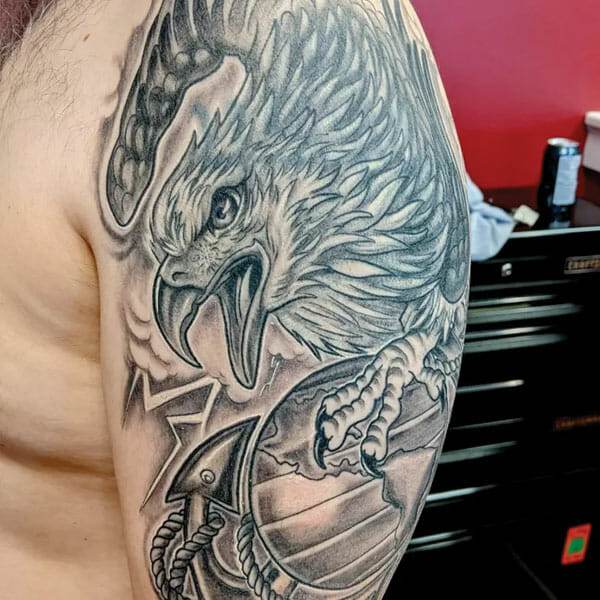
The Future of Cover-Up Tattoos: Trends and Innovations
As with any art form, cover-up tattoos are subject to trends and innovations. Currently, there are several trends in cover-up tattoos that are gaining popularity. One trend is watercolor tattoos, which involve using vibrant colors and fluid brushstrokes to create a painterly effect. Watercolor tattoos are often used in cover-ups to create a soft and dreamy look that effectively conceals the old tattoo.
Another trend is geometric tattoos, which involve using geometric shapes and patterns to create intricate designs. Geometric tattoos are popular for cover-ups because they can effectively mask the old tattoo by incorporating it into the overall design. The clean lines and symmetry of geometric tattoos also make them visually appealing and versatile.
In terms of innovations, advancements in tattooing techniques and technology have made cover-up tattoos more effective and efficient. For example, laser tattoo removal can be used as a pre-treatment to lighten or fade the existing tattoo before getting a cover-up. This allows for more flexibility in design options and can result in a more seamless cover-up.
The Beauty and Artistry of Cover-Up Tattoos in Montrose
Cover-up tattoos have become increasingly popular in Montrose, offering individuals the opportunity to transform their existing ink and create something new and meaningful. Whether it’s hiding a regrettable tattoo, updating an old design, or simply desiring a fresh start, cover-up tattoos provide a solution for those looking to conceal or transform their tattoos.
The artistry and skill involved in cover-up tattoos are truly remarkable. Tattoo artists who specialize in cover-up work have the ability to turn a regrettable tattoo into a work of art. They carefully plan and execute the new design, taking into consideration factors such as color matching, composition, and technique. The result is a visually appealing and cohesive piece that effectively conceals the old tattoo.
Ultimately, cover-up tattoos offer individuals the opportunity to reclaim their body and express themselves creatively. They can boost self-confidence, create a fresh start, and preserve memories associated with the old tattoo. The beauty and artistry of cover-up tattoos in Montrose are a testament to the skill and creativity of tattoo artists, as well as the transformative power of ink on skin.

